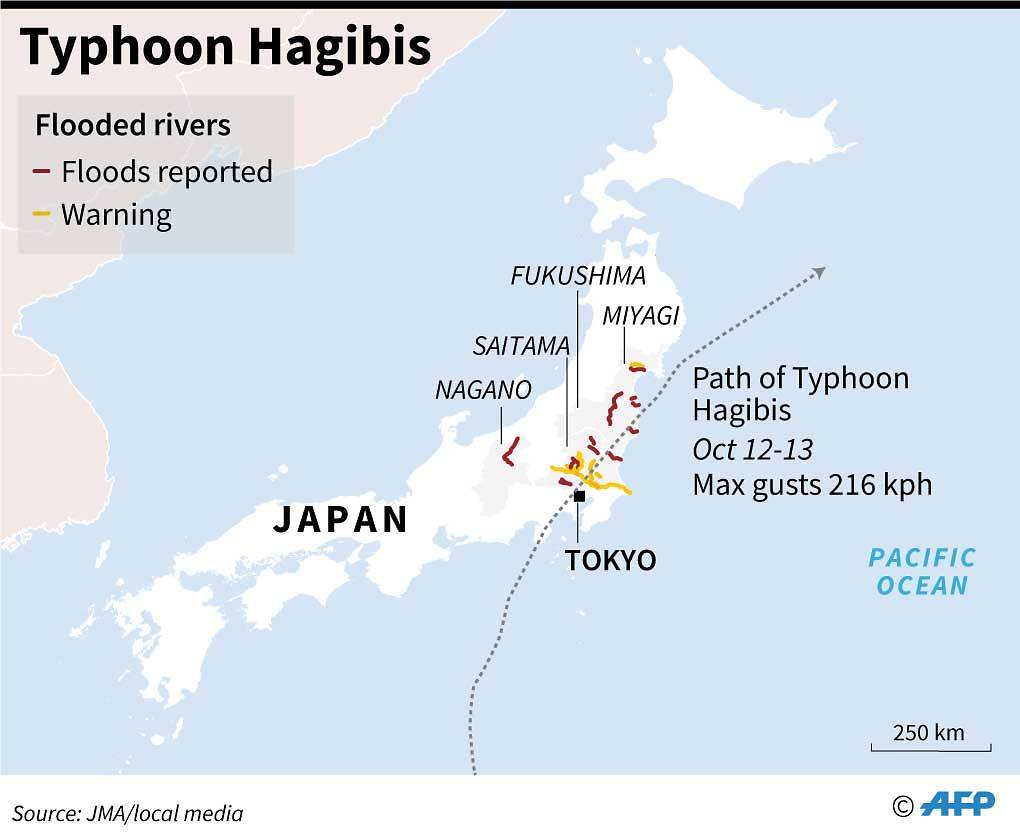SINGAPORE: Prime Minister Lee Hsien Loong wrote to his Japanese counterpart on Tuesday (Oct 15) to offer his deepest condolences after a powerful typhoon over the weekend left more than 70 people dead.
Typhoon Hagibis slammed into Japan on Saturday night, with heavy rain causing landslides and dozens of rivers to burst their banks.
By Tuesday night, Japanese media reported that at least 72 people had died, with about a dozen missing. The government’s tally was lower, but it said it was still updating information.
More than 200 people were injured in the storm, whose name means “speed” in the Tagalog language.
In a letter to Japanese Prime Minister Shinzo Abe, Mr Lee said: “I was saddened to learn of the tragic loss of life, and the injury and destruction caused by Typhoon Hagibis.
“On behalf of the Government of Singapore, I offer my deepest condolences to the families of those affected. Our thoughts are with you and the people of Japan during this difficult period.”
READ: Typhoon Hagibis: Tokyo, central Japan left devastated
A man pulls a wheelbarrow, in the aftermath of Typhoon Hagibis, in Koriyama, Fukushima prefecture, Japan October 15, 2019. REUTERS/Soe Zeya Tun
About 110,000 police, coast guard, firefighters and soldiers are involved in the rescue operations, Mr Abe said.
His office added that more than 3,000 people have been rescued in the wake of the disaster, which affected 36 of the country’s 47 prefectures.
Mr Lee added: “I am confident that Japan will, with its usual resilience, recover from this disaster quickly and emerge stronger.
“Please let us know if Singapore can be of any assistance in the relief efforts.”
Japanese government officials warned that more rain was expected throughout the day on Tuesday in several parts of the country affected by the typhoon.
“We ask people not to drop their guard and to remain fully alert,” chief cabinet secretary Yoshihide Suga told reporters.
Hagibis crashed into land, packing gusts up to 216kmh, but it was the storm’s heavy rain that caused the most damage.

Map of Japan showing path of Typhoon Hagibis and flooded rivers. (AFP/Laurence CHU/John SAEKI)
At least 176 rivers burst their banks, including in central Nagano, where a levee breach sent water from the Chikuma river gushing into residential neighbourhoods and submerging bullet trains in a depot up to their windows.
By Tuesday morning, around 34,000 households were still without power, and 133,000 homes had no water.
Tens of thousands of people spent Monday night in government shelters, with many unsure when they would be able to return home.




